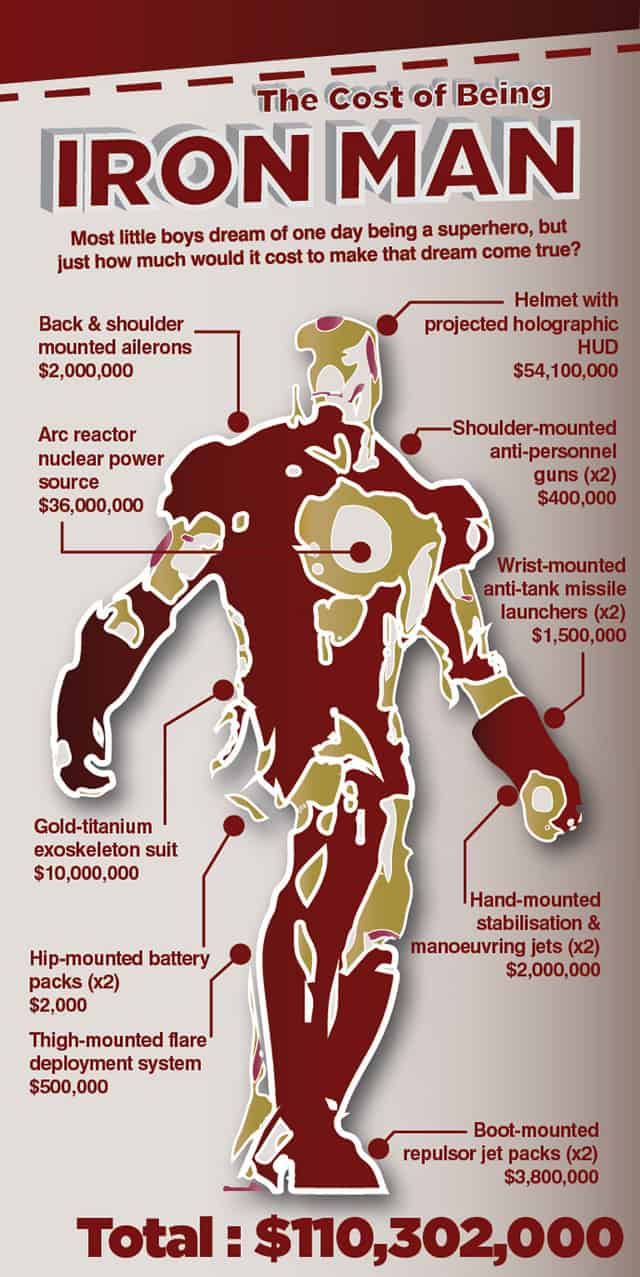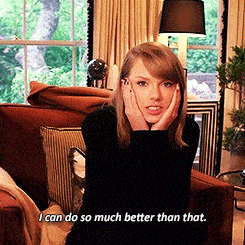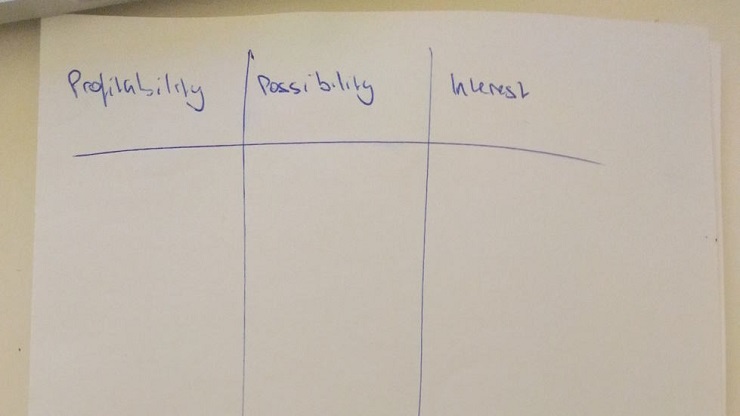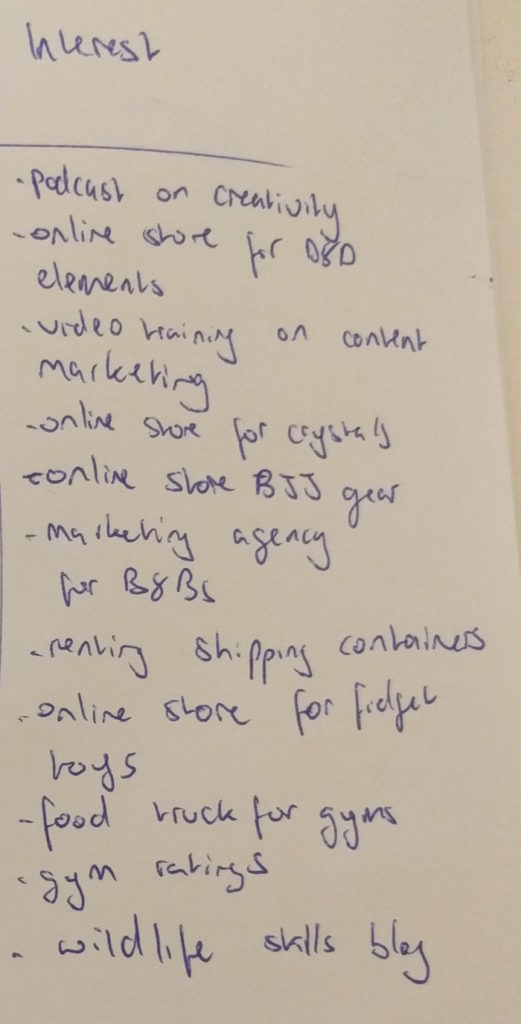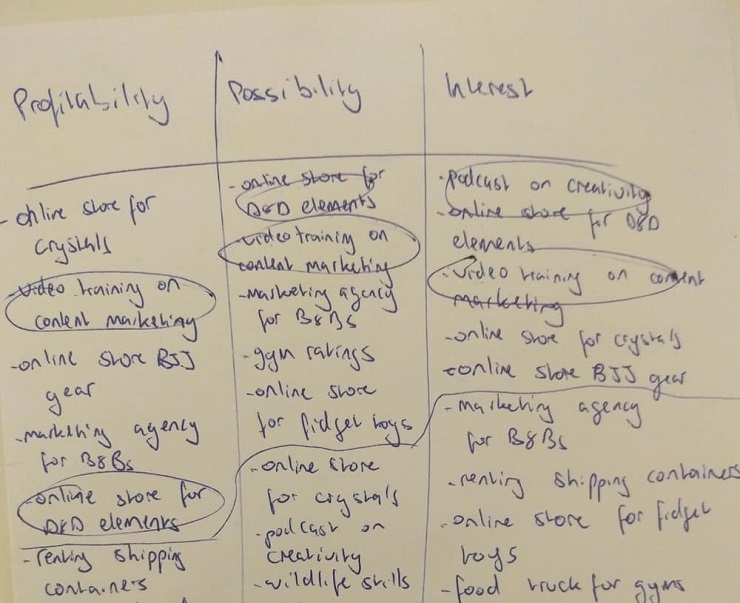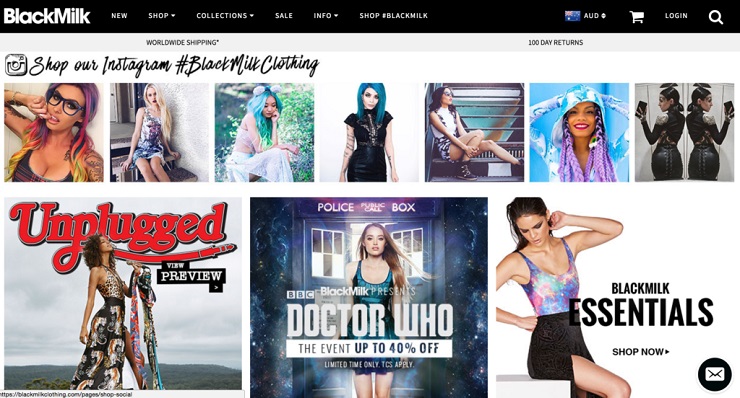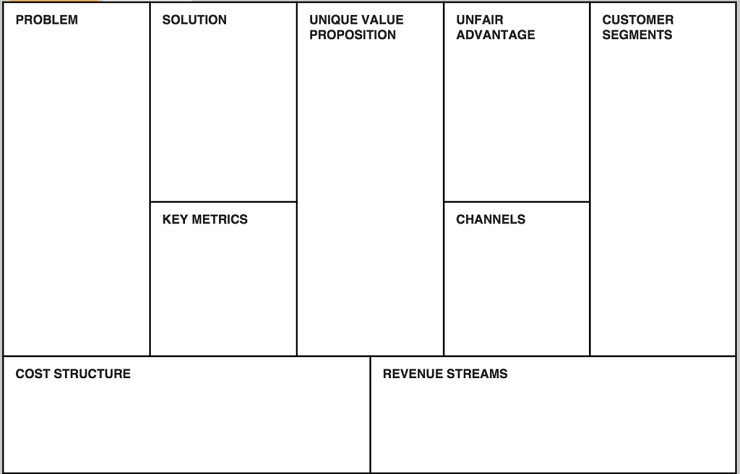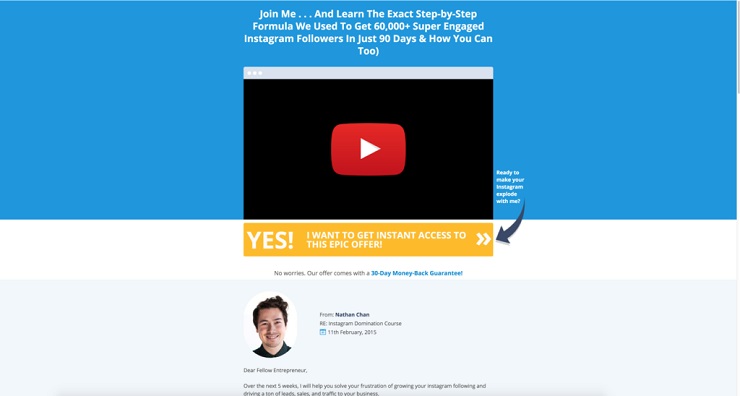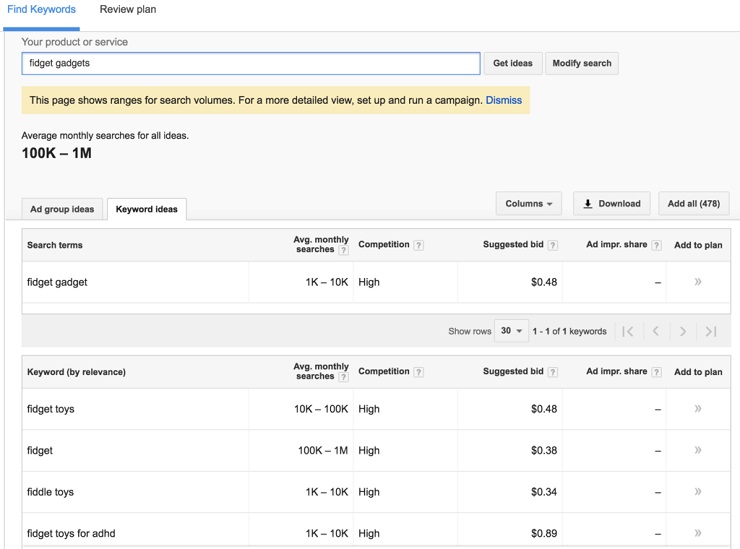If you’re reading this article, you either believe you don’t have any good business ideas, or you have way too many business ideas. Either way, the problem remains that you’re paralyzed from moving forward as an entrepreneur.
You’ve maybe heard the stories of entrepreneurs quitting their jobs and making great livings with online businesses , and you know you want to start a business, maybe an online ecommerce story, yourself. But the problem is, you’re not sure whether you have a good enough idea, and it’s keeping you from taking the plunge.
There’s a lot of chatter about how the people executing are more important than the idea. And that’s true to some extent. But your idea is important. You might know everything there is to know about building a business, from how to create a business plan to accounting to marketing your product. But unless you have an idea, you’ve got nothing. Ideas are where it all starts, and in order to start a business you need to find one, and then know whether you’ve got a good one on your hands.
It doesn’t matter if you’re Mark Cuban or someone who’s never started a business before. Here’s a foolproof way you can not only generate a whole list of business ideas, but also test and validate to see if they’re profitable or not.
Before we get started, check out the video below where serial entrepreneur Gretta van Riel explains the exact process she follows every time she looks for a new business idea:
Without further ado, here’s Foundr five-step plan to generating and validating your business ideas.
Looking For A Good Business Idea? Learn How To Start a Profitable Online Store In 12 Weeks!
Foolproof Business Ideas
Step 1. Generating a List of Business Ideas
First things first, let’s get those brain juices flowing. Get a piece of paper and a pen and start writing down as many ideas and problems you can think of. It doesn’t matter if it takes you just an hour or a whole afternoon. It also doesn’t matter if they are simple or unique online business ideas or something more complex. If you’re interested in ecommerce and online product selling, business ideas are also plenteous. Don’t judge it. Write down everything that comes to mind until you’re officially out of ideas.
If you’re not satisfied with your list, don’t worry. There are plenty of places you can go to find inspiration for your next big idea. Here’s how to get started.
Work out your idea muscle
Take a page out of James Altucher’s book and get your idea muscle in shape by writing 10 new ideas every day.
They don’t necessarily have to be business ideas; they can be anything from ideas for movies, or a random invention you can think of. The idea is that coming up with ideas is a skill you can improve with practice.
As you can see my ideas range from article ideas for Foundr, to potential business ideas, to ideas for my D&D games. Your ideas can be anything you like, don’t put a limit on them.
But don’t just write one-off sentences and call it a job well done. You want to actually flesh it out beyond just an initial thought. That can mean a table of contents, or just a general outline consisting of two or three sentences about how you’d hypothetically make this work.
They don’t have to be full-on plans or even fantastic business ideas. They can even be what you would consider online business ideas for beginners. The point of this exercise is to get that part of your brain working and, most importantly, working for you.
Find some problems
One of the best places to find inspiration for a profitable business idea is to simply look for some problems. That doesn’t mean going around being a troublemaker, or becoming a crime-fighting vigilante.
The startup costs alone are astronomical
Simply take a look at your own life for starters, and see if you can find any pain points that you wish could be solved. Do you wish there’s an easier way to buy something online? Is there a current provider that isn’t fulfilling a need of yours? Is there a particular product that isn’t readily available?
If you’re still stumped, talk to your friends and family, or even strangers! Get into conversations where you’re talking about things they wish existed.
Remember, the key to finding profitable business ideas is to have a mindset of trying to change even just one person’s life. Don’t start out with the goal of changing the world because, trust me, you’re going to fall very short.
“You can either build something a large number of people want a small amount of, or something a small number of people want a large amount of. Choose the latter.” – Paul Graham, co-founder of Y-Combinator.
If there is even one person experiencing this problem, you can be guaranteed there are thousands more out there going through the same thing.
What are you interested in?
While you don’t necessarily need to be extremely passionate about your product in order to build a successful business. It does help if you’re, at the very least, familiar with the industry or market you’re trying to get into.
Take a look at your own interests, your hobbies, at the products and services you already buy and ask yourself: How can I make this better?
Something that often stops many entrepreneurs is that someone else has already “taken” their idea. So they’ll often abandon it and try to think of something else completely new. As though entrepreneurship is merely a race to come up with a business nobody has ever thought of.
The truth is, there is virtually nothing new under the sun. Being the best doesn’t mean being the only competitor. It means being better than the rest out there.
You don’t need to be the only player in the market in order to have a successful business. The world is a huge place with tons of potential customers, and you don’t need to sell to every one of them. You just need a percentage of the market.
Take a look at what things you’re already interested in and think about how you can do it better, and you’re got yourself a new business idea.
Step 2. Finding Your Profitable Business Idea
Now that you have a big list of business ideas, it’s time to start separating the wheat from the chaff. This section will help you cut down your business ideas list to, at most, three ideas you can start working on.
In order to get there, complete this very simple exercise to help you rate and assess each idea, by ordering them using the following criteria. If you happen to have a particularly large list of business ideas, it’ll help if you ruthlessly cut that list down first until you have no more than 15 or so ideas.
There are three main criteria that you should be focusing on when it comes to assessing your business ideas: profitability, possibility, and interest.
Start by creating three columns, one around each of these criteria.
Profitability
Order your business ideas from most profitable to least profitable. Basically you want to see which of your ideas has the highest chance of being a major return on investment for you.
You don’t need to get into the nitty gritty just yet, right now just go with your gut and what you know so far.
Ask yourself questions like:
- What would I sell this product or service for?
- Realistically speaking, how much can I make per month with this?
- How large of a market is there?
Possibility
Next up, it’s time to reorder your list by the actual likelihood of this happening. Order your business ideas from the easiest to the most difficult it will be to get them up and running.
This is especially important if you’re a solopreneur and looking to just create a side hustle (or entertain online business ideas from home), or you don’t have a ton of resources to leverage at the moment. If that’s you, coming up with something that will require a ton of staff, expertise, and capital right off the bat is a recipe for nothing happening.
For example, an idea for starting an online store to sell phone cases, that’s something that doesn’t require a huge amount of effort so you can put that near the top. But your idea for designing the first submarine car? That can go toward the bottom unless you happen to be Elon Musk.
Ask yourself questions like:
- Are there any legal hoops that I might need to jump through?
- Can I realistically devote time to this?
- How much will this cost me to start up?
Interest
Finally, it’s time to filter your list by your passion. Take a look at your business ideas and order them by how what interests you the most to what interests you the least.
Ideally, this will be something you’ll be working on for the next couple of years at least, so your idea has to be something that’s not only profitable but something that you’ll enjoy too. You can be quite successful with a business idea you don’t care about.
One example that comes to mind is from Tony Stubblebine, who once told Foundr that before he developed Coach.me, he had created a profitable social platform serving conference organizers. “And then once I made it work, I was left thinking, why on earth did I build software for conferences? This is not my life’s work at all.”
Again, you can make a little scratch this way, but you’re likely to hit a dead end based on your disinterest. Plus, the more invested you are in your particular niche, the better your chances of persevering when the going gets tough.
So ask yourself questions like:
- Can I talk about this all day with a friend on a Saturday morning?
- Would I consider myself an expert on this?
- Realistically speaking, can this be something that fulfils me?
The final part of this exercise is to compare your list of ideas against each other. Only take a look at the top half of each column and circle the business ideas that appear in the top five of each column.
What you should be left with now is at least one business idea that you can realistically start working on today, if you wanted to.
If you don’t happen to have an idea that fulfils all three requirements, then repeat steps 1 and 2 as necessary.
Step 3. What’s Your UVP?
Now this is where things are going to start getting a little dicey. It’s time to figure out what your Unique Value Proposition is, otherwise known as your UVP.
Some marketers might know this as a Unique Selling Proposition (USP), but I’m going to stay away from that term since we’re not really talking about how you’re going to sell your product, but the product itself.
Your UVP is one of the most important aspects of turning your business idea from a figment of your imagination to an actual reality.
It’s how you differentiate yourself from the rest of the crowd. Unless you happen to have invented an entirely new product or service, you’re going to need to find a way to set yourself apart from the competitors already in your market.
When it comes to discovering a UVP, a lot of people tend to focus on the “unique” part and try to differentiate their business ideas with some sort of gimmick. Like a bottled water but for pets, or gloves but made out of bread.
These are what Paul Graham of Y-Combinator calls “sitcom ideas.” Ideas that appear to have come from the brain of a sitcom writer, because they sound vaguely possible but in reality they offer no value besides the novelty of their gimmick.
You thought I was joking didn’t you?
Instead the word to focus on is “value.” Instead of trying to be different for the sake of being different, you have to ask yourself what kind of value are you bringing your customers that they can’t get anywhere else.
Are you offering a different design, or an extra function that’s unique to your product or service? Are you giving value by making your product cheaper than the rest?
Really push yourself into thinking what dimensions you can change about your business ideas, and really question yourself about what value these changes bring. Doing this not only helps you build a better product, but it also gives you an easy and effective way to market yourself and get noticed in a crowd.
Looking For A Good Business Idea? Learn How To Start a Profitable Online Store In 12 Weeks!
Case study: SkinnyMe Tea
In our interview with Gretta Rose, the founder of SkinnyMe Tea she describes how she found her UVP by simply adding one extra dimension to her product.
In 2013, Rose noticed the growing popularity of teatoxes, or teas designed to help customers lose weight or promote various health benefits. Instead of simply offering a different flavor, or trying to out-promote existing brands, she offered a detox plan along with her product, thereby giving her customers an actionable plan they could follow.
SkinnyMe Tea was able to provide value in a way that competitors were not. Based on that UVP, and some Instagram marketing hacks, SkinnyMe Tea became a multimillion-dollar business in a few short years.
Case Study: Black Milk Clothing
In 2008, Black Milk Clothing didn’t exist, but today it’s a multimillion-dollar business endorsed by some of the world’s most influential celebrities like Miley Cyrus and Katy Perry.
What separates Black Milk from everyone else in the women’s fashion industry is the design of their product. Black Milk serves an unique market by making their designs as outrageous as possible.
From geeky prints about comic books and video games, to outlandish patterns and designs, Black Milk immediately corners its market by being the only place where customers can purchase their particular style of design.
Case Study: Greats Brand

But if you look closely, you can also see another dimension of Greats’ UVP is the relatively short lifecycle of their original designs, and the fact that you can only purchase their product through their website.
By not involving retailers, and only creating a limited number of their product, Greats has managed to add an extra layer of exclusivity to their UVP. This gives their customers value, not just by saving money, but also offering them a chance to purchase a limited edition product.
Step 4. Building a Business Model Canvas
While I’m sure you’re now filled with endless amounts of energy and passion to start working on your business idea as soon as possible, let’s take a moment to pause and make sure you’ve got all your ducks in a row before we start going crazy.
Now that you have at least one solid idea, let’s start building a business model canvas.
Developed by Alexander Osterwalder, and favored by entrepreneurial legend Steve Blank, the business model canvas is a simple tool that helps you break down the nine essential elements of your business.
It’s an incredibly simple tool that helps take those vague ideas out of your head and put them out onto paper. It’ll force you to take a step back and look at your business ideas objectively and force you to think about areas that you might not have considered before, or challenge you on assumptions that you’ve made.
This step will require you to actually take some time and get some research done. It’s always better to be a little over prepared in these cases, so don’t feel bad if this takes you more than a couple of days to fill out.
Here’s a quick breakdown:
Customer Segments
Figure out who your primary and secondary customers are. Help yourself out by figuring out the buyer personas of your customers.
Understand the demographics your ideal customer falls into, and what needs you’re helping them fulfill. You should theoretically be able to know your ideal customer as if they were a close friend.
If you do happen to know anyone that fits into the mold of your ideal customer, then get out there and talk to them. Find out where your customers like to hang out and go there to conduct some research.
Value Propositions
You’ve already figured out what your UVP is, but delve a little deeper. Now that you know what your customer looks like, figure out what the most important features and aspect of your products are the most important to them.
Channels
This is where you figure out how you’re going to make your customers aware of your brand and how they’re going to receive your products.
List all the marketing channels you can think of and order them by how influential each channel is to your target customer. Do a little research and see what channels others in your niche are using. See if you can pinpoint a certain tactic or strategy that you can use too.
Also think about what needs to happen in order for your customer to receive your UVPs. If it’s a physical product, are they going to receive it through commercial retailers, or through your website?
Customer Relationships
This is how your customer is going to interact with your brand. Figure out what kind of support to your customers, whether it’s going to be online or perhaps something more personal.
Take another look at your list of channels and see if they can potentially be places for you further the relationship you have with your customer.
Revenue Streams
It goes without saying that if you’re not making money, you’re not running a business. Quite simply, figure out what sources of revenue will be at your disposal.
Are you planning on selling purely through an online store? Are you thinking about taking advantage of platforms like Etsy or Pinterest? Do you plan on running ads on your site?
This is a good time to start thinking about what kind of value you’re bringing to your customer and how much you believe you can charge for it.
Key Activities
This describes what needs to happen in order for your business to run successfully.
Taking a look at your value propositions, are there any special systems that need to be in place in order to make sure these happen. Next, take a look at your channels, are you going to be investing a lot of time in marketing your brand through these channels?
If you’re planning on drop shipping, then a key activity would be getting your product from the manufacturer and directly to your customer. Any activities that you believe need to happen in order for your business to be successful, list them out in this section.
Key Resources
What resources do you need to make your key activities happen?
Don’t just think in terms of financials, but consider the skills and abilities that you’ll need in order to run your business. I highly encourage you to invest the bulk of your time in finding existing tools or services that you can use to help give you leverage when it comes to managing your key activities.
For example, if a key resource for you is building a stoppable online store, then instead of hiring a web developer, consider using services like Shopify in order to build it.
Key Partnerships
No man is an island, and the same could be said for a business. No business exists in a vacuum, and unless you happen to be manufacturing and selling your products directly through your own home, chances are, you’re going to be relying on other people or organizations.
If you’re selling a physical product then key partnership you have to consider would be manufacturers, shipping companies, and maybe even companies for storage. On the other hand, if you’re selling a service then consider where you’ll be getting referrals from, or if you’ll be renting out a space.
Cost Structure
This is the part where you figure out what it is you need to not only build your business, but to maintain it as well.
Not just the obvious costs like if you need any special equipment or space, but costs of the resources you’ll be employing and ongoing costs of your key activities.
While you don’t need a degree in accounting or finance, you do need a relatively good grasp of what your financial situation will be like. Lay it all out and figure out what costs you absolutely need to keep, and what resources or activities you can live without in order to keep costs low.
Step 5. Validating Your Business Ideas
The last, and final, step is to validate your business idea and see whether you have a legitimate business on your hands or a dud. It’s important that you always validate your business ideas first, so you don’t waste your time and money on something that ultimately no one wants.
Here are some relatively inexpensive ways you can go about validating your business ideas:
Make Your First Sale
Here’s what the first landing page for Instagram Domination course looked like for our own smoke test
The most surefire way to validate your idea is by making your first sale, and you don’t necessarily even need to have a physical product to do so.
Take a page out of Joel Gascoigne’s book and conduct a smoke test.
Set up a simple landing page for your product. It doesn’t have to be anything that looks incredibly professional or well-designed. Just some good copy that explains what your product is all about and a large call-to-action button encouraging people to buy now.
After that, start driving people toward your product page. It can be as straightforward as doing a social media blast. Or if you happen to have $100 to $200 for this test, then try Google AdWords or Facebook ads to drive paid traffic to your site.
Check on the metrics of the page a week later and see how many people clicked on your “buy now” button. If you have either a 5% conversion rate, or have made more than a hundred “sales,” then you can consider yourself the proud owner of a validated, profitable business idea.
Talk to People
When it comes to validating your business ideas, there’s nothing easier than getting out the building and talking to real people. Not only is it a fantastic way to conduct market research on your product or service. But you’ll also learn how to articulate your vision, and learn how to pitch your business to someone who isn’t you.
A method I’d highly recommend would be the Google Usability Cafe
Basically, you head over to your favorite coffee shop and set up a small workstation. In exchange for buying them coffee, spend the day talking to random people about your idea. See if they like it, what they think of it, and most importantly if they’d pay money for it.
Note each person’s responses. While you’re at it, you can also start building your email list. At the end of the day, take a look at what people have said. If the response has been overwhelmingly positive, then you have yourself a validated idea.
Study the Market
Another way to validate your idea is to do some good old-fashioned research and see how much interest people have in what you’re offering. Thankfully, you don’t have to wait for months for the latest trend report, because there’s a variety of online tools out there that can get you this data in real time.
One way is to check Google Keyword Planner and see how many people are searching for your product. A good rule of thumb is that if you have over a thousand searches per month, then it’s a fairly good indicator that people are looking to buy.
Google Keyword Planner not only lets me know how interested people are in this particular business idea, but also different angles I can take as well
Another way is to browse Amazon and eBay and take a look at what the top sellers are. If you can find a similar product or competitor on there, even better. If it looks like your product idea is pretty popular with lots of different stores, then you know that there’s a substantial market out there.
Be sure to take a look at the reviews as well and see what complaints people have if there any. This is valuable information because it can help inform you in all the different ways you can do your version better.
Looking For A Good Business Idea? Learn How To Start a Profitable Online Store In 12 Weeks!
Wrap Up
Every great business in the world starts off as an idea, but not all great ideas will necessarily turn into great businesses.
It doesn’t matter if you’re Richard Branson, or someone looking to start their own business for the first time. You’ll need a way to take those ideas you have in your head and bring them one step closer to reality. With this foolproof 5-step method, you’ll be able to generate and validate hundreds of business ideas and figure out whether or not you have a profitable business on your hands, or just a dud.
Has this guide been helpful to you? What business ideas did you come up with in the end? If you’ve already started, how did you come up with your current business idea? Tell us in the comments below!




